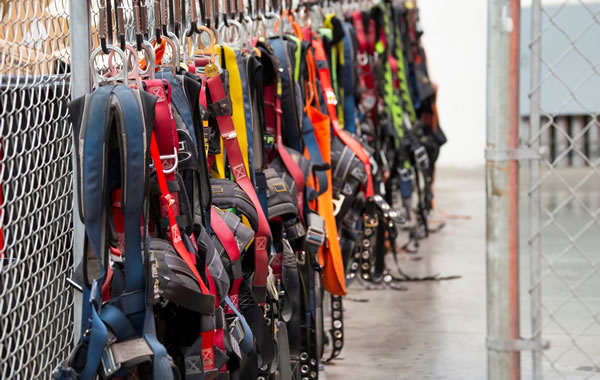Government Contracting Database
Brand Name or Equal Products
When a contract contains brand name specifications, a potential contractor can review the specifications for a product substitution and can often obtain a competitive edge by basing a bid on an equal product that is less expensive than the brand-named product specified.
The FAR permits the description of a product by brand name or equal in limited circumstances, FAR 11.104; however, this type of description is not encouraged and has been termed the least acceptable method of describing what is to be purchased. It is only utilized when no other method of specification is available to the procuring activity. 1 N. Steiger et al., Federal Contract Management, Sec. 3.2[11][c] (1991).
The FAR direction for use of an “or equal” description is that “Agencies should provide detailed guidance and necessary clauses for use by contracting activities when using this technique.” The Department of Agriculture has supplemented the FAR in this respect and requires that:
A “brand name or equal” purchase description shall be used only under the conditions listed in FAR 11.104 and in accordance with the following policies and procedures.
All salient characteristics of the “brand name product or products” which have been determined by the initiating office to be essential to the government’s minimum requirements shall be clearly identified and included in the purchase description under the heading, “Salient Characteristics.”
Prospective bidders should not have to guess at the government’s requirements. Blount Bros. Corp., supra. Also, in rejecting a proffered equal item, the government cannot rely on characteristics or criteria which have not been set forth. Manning Elec. and Repair Co., Inc. and Safeco Ins. Co. of Am. v. United States, 22 Cl.Ct. 240 (1991); R.R. Mongeau Eng’rs, Inc., ASBCA No. 29341, 87-2 BCA p 19,809. However, the government need not allow changes to an existing system in order to accommodate a contractor’s proposed use of an equal product.
When a brand name or equal purchase description is used, the specification becomes, in reality, a performance specification. The standard of performance applicable to the “or equal” is that it must be functionally equivalent to the brand name product, but not necessarily the same in every detail. The Court of Claims has specifically rejected the government defense that it is entitled to get exactly what it specifies. The substitute does not have to comply with every detail of the specification, but only function as well as the specified product. P.W. Const., Inc. v. United States, 53 F. App’x 555, 560 (Fed. Cir. 2002) (citing Jack Stone Co. v. United States, 170 Ct.Cl. 281, 344 F.2d 370, 374 (Ct.Cl.1965)); Aerodex, Inc. v. United States, 417 F.2d 1361 (Ct.Cl.1969); and see also Ocean Elec. Corp., NASA BCA No. 371-8, 73-2 BCA p 10,355. Any other interpretation would require reading the “or equal” language, as well as the Material and Workmanship clause, out of the contract. Such interpretation would, moreover, be contrary to the rule requiring reading the document as a whole and giving effect to all its material provisions. As the Armed Services Board of Contract Appeals stated in R.R. Mongeau Eng’rs, Inc., ASBCA No. 29341, 87-2 BCA p 19,809:
Where a brand name or equal product is identified, the specifications should list the salient functional, physical, or other characteristics essential to the government, J.L. Malone & Assocs. v. United States, supra.
It should also be noted that the Court of Claims has defined equivalency between two items as follows: “if it performs substantially the same function in substantially the same way and for substantially the same purpose.” J.B. Williams Company v. United States, 450 F.2d 1379, 1391 (Ct. Cl. 1971). The true measure of equivalency must come from actual comparative testing and analysis of the instrument and for a contractor’s claim to be supportable, the item must prove to be substantially the same as the brand name with respect to specification requirements. Id. The CO is within his/her discretion to reject an alternative product if he/she correctly determines the alternative was not the equal of the specified product. However, this discretion is not absolute and must be reasonably and fairly exercised and there must be some explanation given where the alternative is rejected. Bruce-Anderson Company Inc., ASBCA No. 29411, 88-3 BCA par. 21,135.
It is settled law that an alternative product need not be identical to the specified one or comply with every detail of the specifications but, rather, it need only provide all of the essential functions specified and be suitable to the actual needs. Id.; D.E.W., Incorporated, ASBCA No. 36698, 89-1 BCA par. 21,312. The burden of proof is on the appellant to establish that its proffered “or equal” functions as well in all essential respects as the specified product. Id. (citing Freeman Electric Company v. United States, 221 Ct. Cl. 884 (1979)); Central Mechanical, Incorporated, ASBCA Nos. 29360, 29414, 84-3 BCA par. 17,674; and see Appeal of Trataros Const. Co., Inc., ASBCA No. 42845, 94-1 B.C.A. (CCH) ¶ 26592 (Dec. 21, 1993).
Updated: May 31, 2018
Looking for additional government contracting resources?
Search Our Database





























